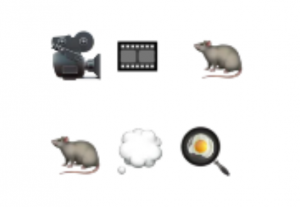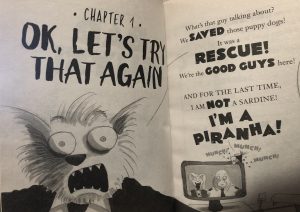For my third Linking Post, I am focusing on our Task #6, an Emoji Story. In this task we were asked to share the title and plot of a story, movie or tv show by only using emoji’s. Before choosing someone to link to, I explored my peers blogs sites to see what others had created. There was quite a variety of stories out there and it was fun trying to decipher what those emoji’s were trying to convey. For this linking post, I am linking my post with that of Judy Tai’s.
My Link: https://blogs.ubc.ca/meipsyshack/2021/02/19/task-6-an-emoji-story/
Judy’s Link: https://blogs.ubc.ca/etec540judytai/2021/02/17/task-6-an-emoji-story/
One thing that brought me to choose Judy’s site to link to is that I was able to quickly narrow down what her title and story was about from her emoji’s. When I saw the rat I first thought The Secret of Nimh and then when I saw the fried egg I realized she was talking about Ratatouille. This did remind me of how my movie was also easily identified. By first looking at my title, The Fast and The Furious, the reader would quickly narrow down the movie as it is simple enough to depict. The plot on the other hand, like Judy’s, had some key images that would seem to support the title. I may not have been able to figure out exactly what she was saying, but because I am familiar with the story, the understanding of the plot was much clearer. Like mine, once you figure out the title and if you have seen the movie or one of the many sequels, then you could figure out the plot easier because of the shared background experience of already knowing the movie background. We both began with the title and built the plot from there. We also both indicated the difficulty in just using emoji’s to create the story, as without written text you risk that the story could be misinterpreted. As I had previously mentioned in my reflection on this task, Bolter (2001) says, “Such icons are meant to put the verbal text in context, as the writer tries to enforce a univocal interpretation on prose that is otherwise open to many interpretations.” Therefore, relying purely on emoji script can lead to different avenues of understanding without written text to guide the way. As Judy herself says, written script helps, “Make the reading experience more transparent and easier for readers to relate and understand what the author is trying to convey.”

Judy’s – Ratatouille

Mine – Fast and the Furious
In Judy’s reflection she spoke to how this task reminded her of her struggling students that have gravitated to that of graphic novels. She states, “Graphic novels have gained in popularity because it offers many benefits to struggling readers or even strong readers that are not interested in reading.” I connected to this as this is something that I have also seen with many students and even my own children. They might not necessarily be struggling readers but they have not made the leap from story books to novels. Graphic novels or even comics seem to be that bridge to interest and engage students. These types of books and their heavy use of imagery supports what the story is about along with some text to guide the way. This does remind me of books like Bad Guys where yes, you can see what is happening but the use of the written text is interesting. Key words are often in different types of font or bolded and italicized to convey an emotion to what is happening such as fear or yelling or laughter. They can also engage with readers on a variety of reading levels with both pictures and text along with a fun story.

Examples are from my own children’s Bad Guys book.

The web authoring tool Judy used is bright, engaging and easy to navigate allowing the clear navigation. I can clearly see where to find her Tasks and Linking Posts through drop down choices just under the header at the top of the page. I also liked how once you have scrolled through her post, that there are links on the left and right to quickly take you back to a task or move ahead to the next task. I also appreciated that Judy has a place to leave comments to provide communication with others and to receive feedback.
References:
Blabey, A. (2015). The bad guys in mission unpluckable. Scholastic
Bolter, J. D. (2001). Chapter 4. Writing space: Computers, hypertext, and the remediation of print (2nd ed.). Mahwah, N.J: Lawrence Erlbaum Associates. doi:10.4324/9781410600110